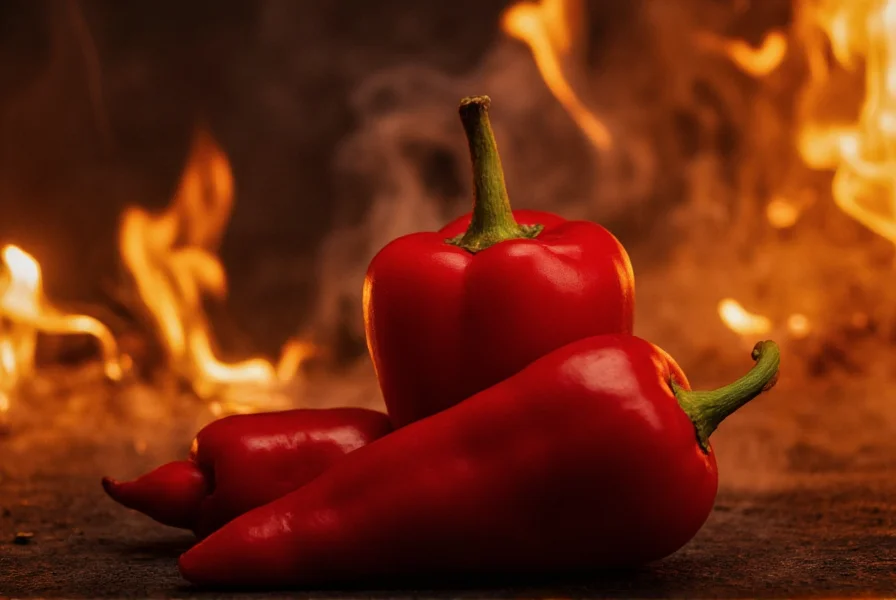The ghost pepper, scientifically known as Bhut Jolokia, represents one of the most intense culinary experiences in the chili pepper world. Originally from Northeast India, this pepper earned official recognition as the world's hottest chili in 2007 when researchers at New Mexico State University's Chile Pepper Institute verified its extraordinary Scoville rating.
Understanding the Ghost Pepper Heat Measurement
The Scoville scale measures capsaicin concentration, the compound responsible for chili heat. When the ghost pepper was first tested, it shattered previous records with measurements averaging over one million SHU. The wide range (855,000-1,041,427 SHU) reflects natural variations influenced by growing conditions, soil composition, and climate factors.
For context, consider these heat comparisons:
| Pepper Variety | Scoville Heat Units (SHU) | Heat Comparison to Ghost Pepper |
|---|---|---|
| Bell Pepper | 0 SHU | 0 times |
| Jalapeño | 2,500-8,000 SHU | 100-400 times milder |
| Habanero | 100,000-350,000 SHU | 2.5-10 times milder |
| Ghost Pepper | 855,000-1,041,427 SHU | Baseline |
| Carolina Reaper | 1,400,000-2,200,000 SHU | 1.5-2 times hotter |
Practical Implications of Ghost Pepper Heat Level
Experiencing ghost pepper heat goes beyond mere spiciness. The capsaicin concentration triggers intense physiological reactions including sweating, flushing, and temporary numbness. Food safety experts recommend extreme caution when handling ghost peppers—always wear gloves and avoid contact with eyes or sensitive skin.
Chefs who work with ghost peppers often note that the heat doesn't register immediately. There's typically a 30-45 second delay before the full intensity hits, which can catch inexperienced consumers off guard. The burning sensation can last for 20-45 minutes, significantly longer than milder peppers.

Historical Context and Certification
The ghost pepper's journey to international recognition began when the Ministry of Defence in India certified it as non-lethal for use in smoke bombs and chili grenades. This unusual application highlighted the pepper's extraordinary potency while demonstrating practical military applications for extreme capsaicin levels.
In 2007, Guinness World Records officially recognized the ghost pepper as the world's hottest chili, a title it held until 2011 when the Trinidad Moruga Scorpion surpassed it. Despite losing the official title, ghost peppers remain among the hottest naturally occurring peppers available to consumers.
Safe Handling and Consumption Guidelines
For those brave enough to incorporate ghost peppers into cooking, experts recommend:
- Always wear nitrile gloves when handling
- Work in well-ventilated areas to avoid inhaling capsaicin particles
- Start with minuscule amounts (1/16 teaspoon of powder or small seed)
- Have dairy products readily available to counteract the burn
- Never consume ghost peppers on an empty stomach
Medical professionals warn that consuming ghost peppers can cause severe gastrointestinal distress, temporary breathing difficulties, and in rare cases, more serious reactions requiring medical attention. Individuals with pre-existing digestive conditions should avoid ghost peppers entirely.
Culinary Applications of Ghost Peppers
Despite their extreme heat, ghost peppers offer complex flavor profiles with smoky, fruity undertones that skilled chefs can harness. The key lies in precise measurement and understanding how heat distributes through dishes. In Northeast Indian cuisine, where the pepper originated, cooks use ghost peppers sparingly to enhance rather than overwhelm dishes.
Popular applications include:
- Specialty hot sauces (typically diluted significantly)
- Meat rubs for bold barbecue flavors
- Chutneys and pickling solutions
- Experimental craft beers and spirits
Ghost Pepper Variations and Related Superhots
The ghost pepper's popularity has spawned numerous hybrids and related superhot varieties. The Bhut Jolokia remains distinct from newer superhots like the Carolina Reaper and Dragon's Breath, though all share extreme heat levels. Some growers have developed slightly milder ghost pepper variants through selective breeding, but these still register well above 500,000 SHU.
Understanding the ghost pepper's position on the heat scale helps consumers make informed decisions about their spice tolerance and culinary experiments. While newer peppers have surpassed it in raw heat measurement, the ghost pepper remains a benchmark for extreme chili heat and continues to challenge spice enthusiasts worldwide.
How many times hotter is a ghost pepper than a jalapeño?
A ghost pepper is approximately 200-400 times hotter than a typical jalapeño pepper. While jalapeños measure 2,500-8,000 Scoville Heat Units, ghost peppers range from 855,000 to 1,041,427 SHU, creating a dramatic difference in heat intensity.
What does 1 million Scoville units feel like?
Experiencing 1 million Scoville units (ghost pepper level) typically causes immediate burning sensation that builds over 30-45 seconds, followed by intense sweating, facial flushing, and temporary numbness. The burning sensation can last 20-45 minutes and may cause gastrointestinal distress. Many describe it as a physical experience rather than just a taste sensation.
Can eating a ghost pepper be dangerous?
While eating a ghost pepper isn't typically life-threatening for healthy adults, it can cause severe discomfort including intense burning pain, nausea, vomiting, and temporary breathing difficulties. Individuals with pre-existing digestive conditions should avoid ghost peppers, and medical attention may be needed in cases of extreme reactions. Always consume with caution and have dairy products available to counteract the burn.
How long does ghost pepper burn last?
The intense burning sensation from a ghost pepper typically lasts 20-45 minutes, though residual effects may persist longer. The delayed onset (30-45 seconds after consumption) often catches people off guard. Dairy products like milk or yogurt can help reduce the duration and intensity of the burn by binding to capsaicin molecules.











 浙公网安备
33010002000092号
浙公网安备
33010002000092号 浙B2-20120091-4
浙B2-20120091-4